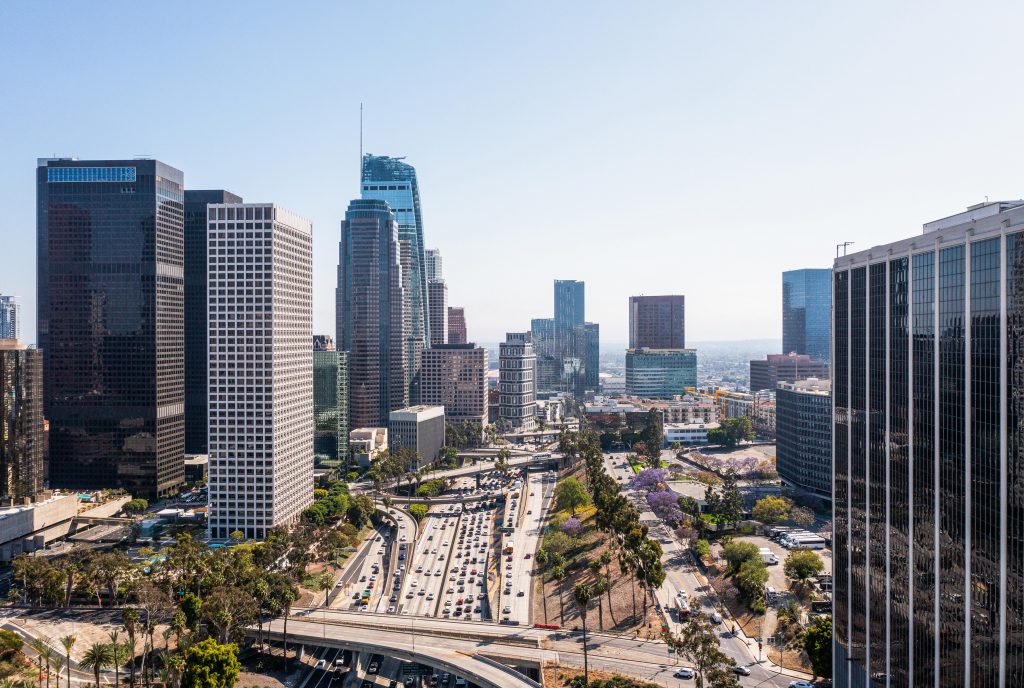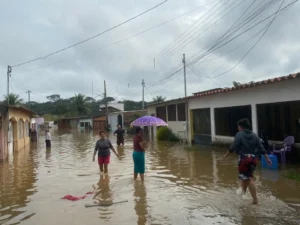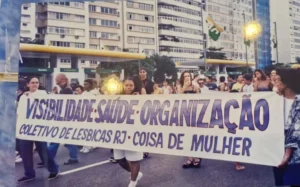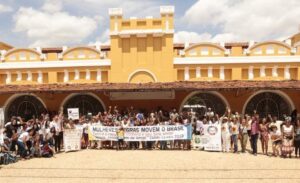In ten years, FFPT has gone from a fringe demand to a mainstream issue

At the beginning of this year, São Paulo mayor Ricardo Nunes of the centrist Brazilian Democratic Movement (MDB) announced his intention to abolish fares in the collective public transport system. Since then, the municipal parliament began studying how to address the issue.
At the same time, many other municipalities all over Brazil have started to discuss the possibility, including other metropoles. São Paulo is not the first major city to mention the possibility, but it is the largest one. Indeed, if the most populated city on the American continent with 11.4 million inhabitants abolishes fares, everything will change — and not only in Brazil.
Mayor Nunes is an uncharismatic conservative politician who was elected as deputy mayor in late 2020. He took over when Mayor Bruno Covas of the Brazilian Social Democratic Party (PSDB) died of cancer six months after being elected, and his move is an attempt to attract votes to be re-elected in the next municipal election in October 2024. His main competitor is Guilherme Boulos of the Socialism and Liberty Party (PSOL), a far-left candidate linked to housing movements and, for a long time, a supporter of zero-fare policies on public transport. Boulos has appeared ahead in the main electoral polls, and Nunes needs radical measures to have a chance in the dispute.
However, the discussion is far from being restricted to a local political fight. Fare-free public transport (FFTP) is set to be the theme of the next municipal elections not only in São Paulo, but throughout Brazil. Much has changed since 2013, when massive demonstrations for free public transport with hundreds of thousands of people shook up Brazil. Initially, the subject was controversial and fringe. By 2013, only 18, mostly small cities had full FFTP systems. By then, politicians did not hesitate to classify the measure as an impossible, infantile daydream. By October 2023, however, that figure had risen to 84 cities, including eight with over 100,000 inhabitants. Now, even conservative figures like Ricardo Nunes are publicly advocating and really trying to move the agenda forward.
What happened? How can the remarkable rise of FFTP in Brazil be explained?
The National Crisis in Public Transport
To understand how things turned around in less than a decade, we must first look at what happened with public transport in this period. The use of buses, trains, and other forms of transportation such as ferryboats is decreasing fast. Public transport shrank. São Paulo municipal buses had transported an astonishing number of 3 billion people in 2013. By 2022, that number had fallen to 2 billion. In other words, the system lost 1 billion passengers in nine years!
This trend was already a reality before COVID-19, but the pandemic made things worse and even now, when the health crisis is considered over, there is no sign that the tendency will reverse. Nationally, the National Association of Urban Transport Companies (NTU), the main trade union in the sector, estimates a reduction of 24.4 percent from 2019 to 2022, representing a loss of almost 8 million trips per day in three years. The crisis is directly related to the cost of transport.
COVID-19 and its economic and social impacts accelerated the decline of transport in Brazil. The financial dimension of the problem becomes evident when fares are suspended. The number of passengers increased in every city that implemented FFTP policies, and the figures continue to rise. This ought to serve as a warning also for governments that are planning to implement the policy: be prepared for a boom in the number of passengers and ready to adapt to new demands fast.
Instead of thinking only in terms of an electric transition, we must also address the modal transition with policies that encourage the use of public transport such as FFTP.
The financial aspect is the main but not the only factor that explains the decline of public transport in Brazil. The growing motorization of Brazilian society, for instance, is another factor behind (and consequence of) the collapse of buses and trains systems. Those who can inevitably switch to private motorized solutions.
Each day Brazil less passengers but more cars and motorcycles in the streets. According to the National Traffic Department of Brazil and the Brazilian Institute of Geography and Statistics, in December 2013, when the population stood at 201 million, the number of vehicles registered in the country was just over 81.6 million, with 45.4 million cars (two for every ten inhabitants) and 18.1 million motorcycles (almost one for every ten). In August 2023, almost ten years later, with the population estimated at 203 million, the number of vehicles jumped to 117.7 million, with 61.2 million cars (now five for every ten inhabitants) and 26.5 million motorcycles (more than one — 1.3 — for every 10).
The federal government has an important role in this trend, implementing tax policies based on the argument that building and selling more cars is important for the economy — which is true, and makes the problem even more complex.
Too Many Cars!
The fact is that this change of scenery, with more cars and motorcycles in the streets and less people using public transport, has a huge impact on quality of life in Brazil’s cities. The environmental and health externalities go hand-in-hand with frightening numbers of deaths and injuries from traffic accidents. The federal government estimates that more than 30,000 Brazilians die in traffic every year — an average of more than 82 deaths per day. The air quality is so terrible in capitals like São Paulo that a brown and grey layer often covers the horizon.
Meanwhile, the automotive industry tries whatever it can to hold on the old model. Its most recent attempt is the promise of “intelligent” cars as a magic solution to all our problems — an illusion that the historian Peter Norton skilfully picks apart in his recent book, Autonorama: The Illusory Promise of High-Tech Driving. Norton points out that it is impossible to reorganize cities for everyone to move in cars, even magic, automatic cars. He also states that we should call them “robocars”, not intelligent cars, since they follow commands rather than make decisions, and also questions the sustainability of the new cars, reminding readers that even electric cars pollute.
In other words: instead of thinking only in terms of an electric transition, we must also address the modal transition with policies that encourage the use of public transport such as FFTP. Nevertheless, public policy largely remains focused on what we could call “motorization” policies. Huge amounts of public money are spent on building and maintaining more infrastructure for cars. Every day we see plans for new avenues, tunnels, and bridges.
Unlike other regions such as the US, where many initiatives that began during COVID-19 were suspended after the crisis, in Brazil they continue and are even being extended.
Infrastructure that favours cars and motorcycles can also be considered a subsidy for Mobility as a Service (MaaS) solutions. MaaS designates models like Uber, transportation systems based on individual solutions where those who can pay are able to move better, faster, and farther. Uber and similar firms like iFood and Rappi found fertile ground for rapid expansion in Brazil. Uber, with an appetite for lack of regulations and vulnerable workers, found in Brazil the perfect combination of indebted drivers and riders (even with fiscal incentives, many of those who bought in had to borrow money), a grave social crisis with massive unemployment, and the ideal infrastructure for private vehicles maintained with public investments.
But are solutions that include labour precarization really desirable? Is it fair or even reasonable that those who can pay move more? What about the externalities of such a model? Ultimately, everybody, even those who can pay, ends up stuck in traffic. It is impossible to guarantee space for all those cars, even when they are only used by a prosperous minority.
Predictions, Possibilities, and Challenges
Where does Brazil go from here? It is hard to say. In October 2023, SãoPaulo mayor Nunes began arguing that, without financial support from the federal government, it would be impossible to move forward with FFTP in São Paulo. At the same time, he announced the idea of providing it only to those who receive social benefits. In that case, instead of a right, mobility would become a populist welfare policy with a large risk of public transport becoming something only for poor people.
Nunes may try to advance this policy in the first half of 2024, looking for the votes that he desperately needs to continue on as mayor. The truth is that, after the election, even if his main rival wins, there is no assurance that he will implement fare-free public transport immediately — or at all.
Nevertheless, the number of Brazilian cities with FFTP continues to rise. Unlike other regions such as the US, where many initiatives that began during COVID-19 were suspended after the crisis, in Brazil they continue and are even being extended. Some regional capitals, like Fortaleza in Ceará or Belo Horizonte in Minas, are gradually being surrounded by fare-free experiments implemented by neighbouring municipalities, which generates considerable pressure to follow suit.
There is also hope at the federal level. The Brazilian parliament has implemented a commission to study the subject and PSOL MP Luiza Erundina introduced a proposal to create a National Mobility System similar to Brazil’s National Health System, which is public and universal with free access to all. Her proposal is based on contributions from cars in a formula similar to congestion pricing but better — instead of indiscriminately charging all cars, larger automobiles with bigger engines are charged more, giving the initiative a progressive tilt.
In Brazil, the movement for fare-free public transport has hope and roads to follow. Let’s hope they don’t drive in the wrong direction.
*Daniel Santini works as a project manager at the Rosa Luxemburg Foundation’s São Paulo Office.




